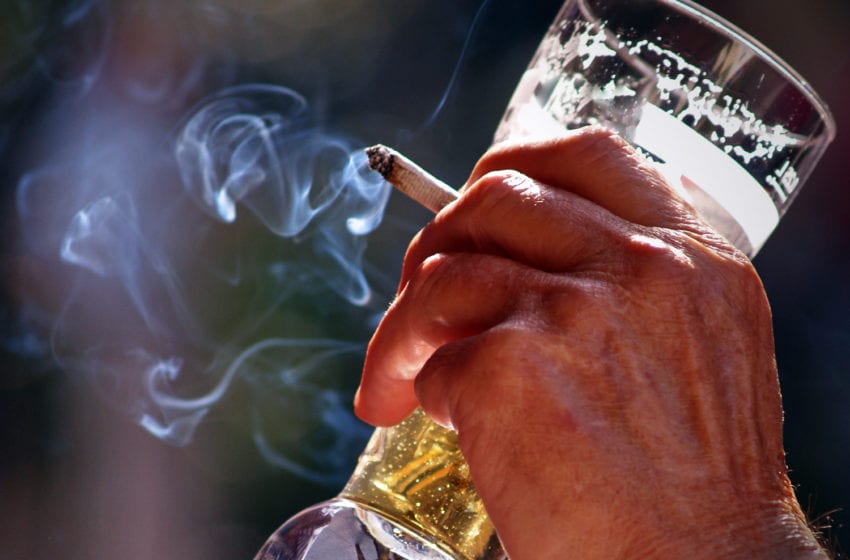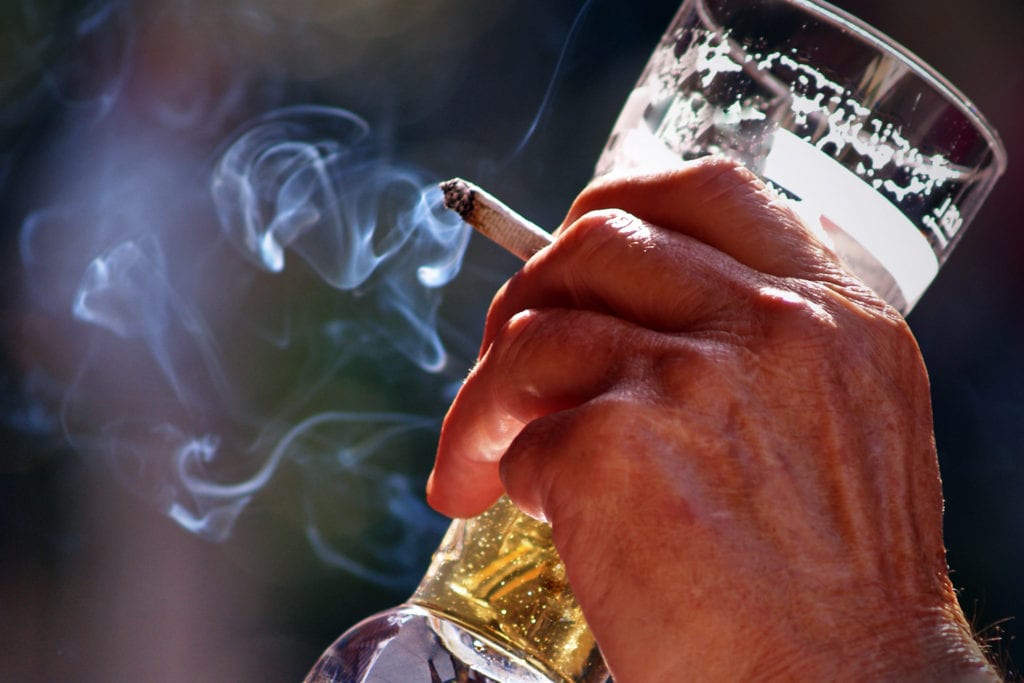Into perspective: The perils of secondhand smoke


The perils of secondhand smoke pale in comparison to some of the other risks people are regularly exposed to.
By George Gay
In many countries, debates have broken out as Covid-19-necessitated lockdowns have been followed by the easing of restrictions on where people may go and on what they may do and with whom they may associate once they get there. These debates have taken different forms, but perhaps the most usual concerns the relative risks and benefits associated with people returning to lives that are post-Covid normal or acting more cautiously. Those supporting the former course of action argue that we need to get economies moving again even though doing so has the potential to reignite the spread of the disease to some unknown extent. Those who support the latter course believe that it is better to leave restrictions in place for an as-yet unspecified time and thereby reduce the threat of a second wave of the disease even though this would increase the economic hit to some unknown level.
As far as I can see, there is no right or wrong side to this debate, partly because the health and economy of a nation are intertwined in complex ways. It is simply to be hoped, therefore, that those charged with making decisions associated with this issue are reasonably competent and take a broadly utilitarian stance aimed at doing whatever they believe will be of benefit to the greatest number of people or, at the very least, doing whatever they believe will cause the least harm.
Difficulty accessing risk
I must say that I have little confidence that our leaders will act in this way. The trouble is, we don’t seem to be good at assessing risk, especially multiple risks, either at an individual or societal level, and if we’re not good at assessing risk, what hope is there that we can effectively reduce harm?
According to a story in the Shropshire Star, in May, conservative Member of Parliament Mark Pritchard wrote to the U.K. Health Secretary Matt Hancock calling for an expansion of tobacco smoke-free areas outside pubs, cafes and restaurants should outdoor seating areas at such venues be allowed to reopen after the Covid-19 lockdown. He said that while he was not against smoking and while there should be dedicated areas for smokers and nonsmokers, he believed the new arrangements were needed to “protect” nonsmokers. “This is about nonsmoking customers being able to sit outside cafes and pubs without having to run the gauntlet of secondary smoke from smokers, especially the elderly and families with young children,” he was quoted as saying. “Why should nonsmokers be forced to breathe in other people’s smoke because Covid-19 forces more people to eat outside?”
I’m certain that, on reading the newspaper’s report, a lot of people would have believed that Pritchard had a point, but in saying what he said, he indirectly referred to a whole host of risks while focusing on only one. And, to my way of thinking, he didn’t focus on the main risk.
Let’s put what he said in a different way. He was apparently happy for adults in England (Northern Ireland, Scotland and Wales, which together with England make up the U.K., have operated with varying degrees of independence in respect of the Covid-19 crisis), where the government’s reaction to the Covid crisis has been chaotic and where even as I write this at the end of July, the situation remains on a knife-edge—to be allowed to go into pubs where there are other people, possibly people infected with Covid-19, which can kill you within days or weeks. He was happy for them to be able to buy alcoholic—read toxic—drinks and take them outside to consume them even though these adults might be in charge of children, and the consumption of alcohol is known to impair decisionmaking processes. He was happy, too, that the adults should be allowed to return to the pub’s interior on multiple occasions, no doubt each time becoming less risk-averse, less conscious of the need for social distancing thereby increasing the risk of Covid-19 transmission. And he was happy that all this activity was to have taken place perhaps—certainly in the case of street cafes—against a background of passing vehicles belching out their toxic fumes. But he was not happy for a little secondhand tobacco smoke to be added to this toxic, risky mix.
Pritchard seemed happy, too, that these families should be able to eat at these pubs, cafes and restaurants, many of which, we are told by the government, offer high-sugar, high-fat menus and the attendant risk of obesity, which, because it is now seen as a high-risk factor in respect of Covid-19, is once again becoming a source of major concern for the government.
Relative risks
Even given that my rendering of the street scene outside these pubs, cafes and restaurants is partisan, you surely have to wonder why the risk associated with secondhand smoke was singled out from all these other risks. One thing we know is that it had nothing to do with the level of risk. The consumption of alcohol, the effects of outdoor pollution on the body and being obese each carry a higher health risk than does breathing secondhand smoke, and Covid-19’s risk seems set soon to overtake that of secondhand smoke.
According to World Health Organization (WHO) figures on annual premature deaths worldwide, secondhand smoke accounts for 1.2 million such deaths, obesity accounts for 2.8 million, alcohol for 3 million and outdoor pollution for 4.2 million. And on July 27, the WHO, in announcing that more than 640,000 deaths from Covid-19 had been reported to it, added that the pandemic was continuing to accelerate. Given that, according to the WHO, the total number of cases had roughly doubled in the six weeks to July 27, Covid-19 looked set to leave secondhand smoke in its wake.
And yet, it is secondhand smoke that is in the firing line here. One of the reasons, of course, is that secondhand smoke, unlike alcohol, is highly visible and has an easily recognizable smell that many nonsmokers don’t like. At the same time, many people seem to like the smell of cooking food and, especially, frying fat, and since the smell of traffic fumes is ubiquitous in cities, pollution has become just part of the background.
Another reason is that governments and other organizations are forever warning of the dangers of secondhand smoke whereas the consumption of alcohol, even with all its attendant negative social attributes (it’s worth checking out what a lot of women have had to put up with during lockdown, often after their partners have been drinking), is seen as a bit of a lark: perhaps a bit naughty but something to make the party go well. A lot of people, including, significantly, many politicians, use alcohol as their crutch in social situations. I think it was Ernest Hemingway who said that he drank to make other people seem more interesting.
And, of course, it goes without saying that governments simply have no answers to pollution and its close relation, environmental breakdown, because they lack the imagination necessary or because they are in hock, one way or another, to the companies that largely cause the pollution.
Refocusing our efforts
To my way of thinking, the above suggests that if harm in general is to be reduced, we in the tobacco industry need to refocus our efforts.
Despite the fact that the industry has a pariah status, it has, in recent years, thought long and hard about harm reduction as it applies to tobacco. In particular, the idea of a continuum of risk of tobacco and nicotine products has been extremely helpful in making a lot of creative people think about how it is possible to reduce the harm caused by the consumption of these legal but addictive products. And these people have come up with and are continuing to come up with an array of innovative, lower-risk products. Unfortunately, however, the idea of a continuum of risk has not changed enough minds, and a lot of people—many with influence and power—have simply dug in their heels and said that the only sensible place for people to place themselves on this continuum is at the nonconsumption end.
Could it be that in suggesting the existence of a continuum of risk that includes only tobacco and nicotine products, we have, inadvertently, suggested that if people don’t use such products, they can live healthy, risk-free lives? Certainly, what Pritchard reportedly had to say would suggest that this is the case. And given this, is it perhaps time that we expanded our continuum of risk to include other products, such as alcohol, other activities, such as driving, and other circumstances, such as poverty, to indicate that quitting tobacco does not render one risk-free?
In his statement, Pritchard played the “children” card, which is typical when people aim at tobacco, but again he seemed, whether consciously or unconsciously, to be selective in what he said. He omitted to point out that he is a member of the party of government that, since 2010, has seen 600,000 additional children fall into poverty. If we want to reduce the harm caused to children, rather than protecting them from a whiff of tobacco smoke, we should stop supporting systems that promote the emergence of zoonotic diseases, stop families from falling into poverty, stop the consumption of alcohol by abusive parents and stop feeding children high-sugar, high-fat diets. Especially, we should stop living polluting lifestyles so that we can bequeath to children an environment that still supports life.

